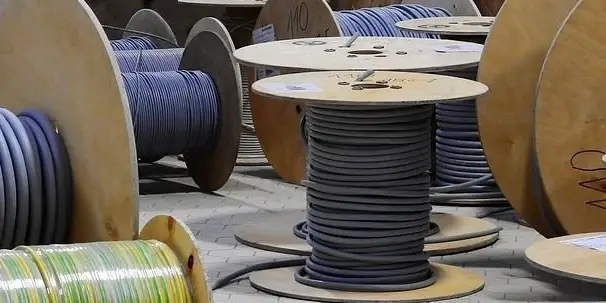EAC Certificate for Cables
The EAC Certificate for cables, wires, and cords is a conformity confirmation for export to the EAEU states. The EAC certification for cables and wires is carried out in accordance with the regulations of the Technical Regulations (TR CU/EAEU) of the EAEU states.
The regulations contain safety requirements regarding the manufacture, transport, storage, and disposal of cables. The aim of the regulations of the Eurasian Economic Union is to protect life and health in the EAEU states.
The following guidelines are relevant for the certification of cables:
- TR EAEU 043/2017 - Fire Safety Certification
- TR EAEU 037/2016 - Certification for Hazardous Substances
- TR CU 010/2011 - Certification for Machinery and Equipment
- TR CU 004/2011 - Certification for Low Voltage Equipment
- TR CU 020/2011 - Certification for Electromagnetic Compatibility
- GOST 31996/2012 - Power Cables with Plastic Insulation for a Rated Voltage
- GOST 26445/85 - Insulated Power Cables. General Technical Conditions
- GOST 31565/2012 Fire Safety Requirements for Cabling
- GOST 24334/80 - Power Cables for Non-Stationary Installation
- GOST 18410/73 - Paper-Insulated Power Cables
Certification of Cables
The EAC Certification of cables is carried out in accordance with the regulations of the EAEU states. Cabling and wire connections with a voltage over 1000V are subject to mandatory EAC declaration. All other cabling and wire connections are subject to EAC certification.
According to the regulations of the Technical Regulation TR CU 004/2011 - EAC Certification for Low Voltage Equipment, mandatory EAC certification is required for cabling with a voltage of 50V to 1000V for alternating current and from 75V to 1500V for direct current.
Certification Schemes:
- 1C, 3C - Certification for Series Production
- 4C - Certification for Single Delivery
Declaration Schemes:
- 1D, 3D - Declaration for Series Delivery
- 2D, 4D, 6D - Declaration for Series Production
Certain cabling and wire connections are not subject to mandatory certification. Therefore, it makes sense to conduct voluntary certification; EAC certification and EAC marking are clear proofs of safety and quality.
EAC Fire Safety Certification
Furthermore, it must be considered that all cable lines require an EAC Fire Safety Certificate in addition to the EAC certificate and GOST certificate. The fire safety certification of cables is carried out in accordance with the regulations of the Technical Regulation TR EAEU 043/2017 and GOST standard 31565/2012.
The following properties of cables are examined during EAC fire safety certification:
- Fire Exposure
- Heat Exposure
- Sun Exposure
- Water Exposure
- Cold Exposure
- Smoke Generation
- Toxicity
Through fire safety certification, the manufacturer of cables obtains an official confirmation that the cable meets the minimum safety requirements of the EAEU states.
GOST Certification
It is also possible to obtain GOST certification and GOST declaration for certain types of cables. The EAC certification of cables is required for heating cables, certain power cables, and non-insulated copper wires. The GOST declaration is carried out for power cables with paper insulation or plastic insulation.
Duration and Costs
The execution of an EAC conformity assessment is a time-consuming and costly process. The exact costs depend on several factors. The specific approval conditions are always calculated based on the product.
The following factors can influence the prices of certification:
- Regulations of the Technical Guidelines (TR CU/EAEU)
- Number of tests by the EAC certification body
- Need for production audits
- Need for inspections
- Required accompanying documents
- Required source documents
- Product composition
- Product characteristics
- Product design
Detailed information about the costs of EAC certification and EAC declaration can be found here: Costs of EAC Certification in the EAEU States.


